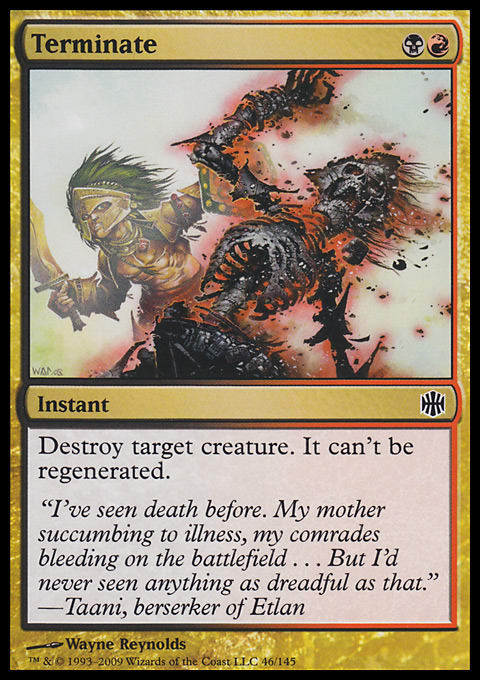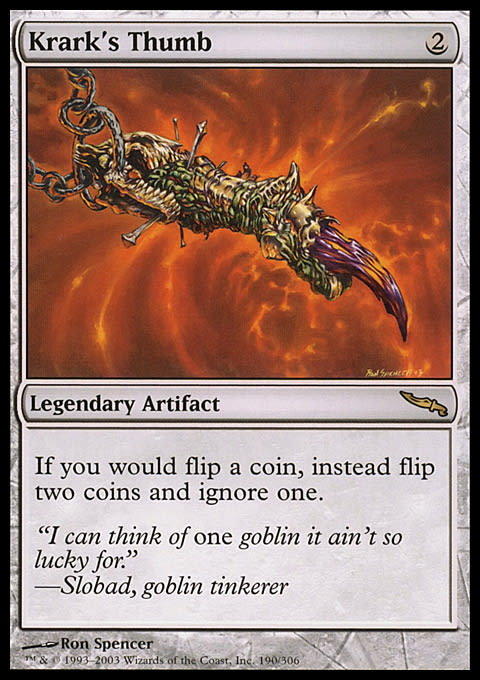A few months ago, I wrote about a proposal to alter the structure for very large Grand Prix tournaments. In light of recent events, I feel that revisiting this discussion is apropos. Grand Prix: Las Vegas shattered the previous record not just for Magic, but for all trading card games. It’s the only Grand Prix ever to my knowledge that was forced to cap attendance. The huge interest was no surprise, but I don’t think anyone was expecting it to be this big. I can only speculate as to the reasons, but it seems that it was a perfect storm of location, timing, and format.
Let me be clear: The fact that Vegas had 4,500 players is a good thing. It’s a testament to how popular Magic has become. While I did not attend, I’m sure that it was a great event. That doesn’t mean it couldn’t have been executed better. I’m going to go over what I perceive to be the problems with an event this size and use Las Vegas as a case study for the framework I previously wrote about.
Losing Twice on Day 1 Effectively Eliminates You from Top 8
At Vegas, thirteen players had a 13–2 record after fifteen rounds. Only two of them made Top 8. Heck, even going 8–1 on Day 1 means you have to 5–0–1 on Day 2 to be a lock. Only going 8–0–1 or better gives you the slightest margin of error to lose a single round during the Drafts. So basically, unless you were fortunate enough to go undefeated Day 1, you can’t lose a single round on Day 2 if you want to actually win the tournament. Let’s look as some actual examples:
- Six players went 8–1 on Day 1 and 5–1 on Day 2 and failed to make Top 8.
- Three players went 6–0 on Day 2 and failed to make Top 8. (They were drawing dead the moment they picked up their second losses).
Now let’s compare with what actually was required to make Top 8:
- One player went 9–0 on Day 1 and drew into Top 8 after losing once. A second loss would have put him out of Top 8.
- Four players went 8–1 on Day 1 and won their first five matches on Day 2 to draw in.
- Two players at 7–1–1 and 7–2 went 6–0 on Day 2.
- One player went 8–1 and then 5–1.
In other words, all but two of them had to win at least their first five rounds. To make matters worse, once you pick up a third loss, you have to win out to maybe win a couple hundred bucks. That might be fine with some people, but it’s not fine with me. I’m not a fan of these razor-thin margins. Like it or not, Magic is a game that has a fair amount of randomness, so expecting someone to not lose ever is unrealistic. That brings me to my next point.
Making Top 8 is Largely the Result of Luck
This may sound like sour grapes, but before you grab your pitchforks, let’s run some math. The best Magic players of all time typically have a win percentage in the 60% to 70% range. I would expect a great deal of variation in someone’s expected win rate depending on the skill level of his or her opponent, but let’s say for the sake of simplicity that we have a single player who has a 15% edge against the field, who are all equally matched against each other. Let’s also say this player has three byes. Now let’s calculate the likelihood of not losing more than once in the first eleven rounds (i.e. rounds four through fourteen). It works out to approximately 7.5% (see the appendix if you want to see how I calculated that). This the win rate of the best players. All of their skill, experience, and practice only amounts to a 7.5% likelihood of making Top 8. Even if we double the edge to 30%—to an 80% win rate—this still only amounts to a 32% likelihood of making Top 8. In fact, you need an 85% win rate for a fifty-fifty shot at Top 8. Now let’s take this to the extreme. Say I have a breeding program for ace Magic players, the ultimate goal of which is to produce a super being, a Kwisatz Haderach if you will. After millennia of selective breeding and intensive training, I produce a Magic player who boasts a 95% win rate. Let’s call him Paul. What is the likelihood Paul makes Top 8 of this tournament? There’s only a 5% chance he loses, the same as rolling a natural twenty. It turns out he’s a favorite to make Top 8, but it’s hardly guaranteed. The likelihood of Paul making Top 8 despite his near flawless win rate is about 90%.
I’m telling you right now, no one has an 85% win rate, so you absolutely need to be lucky regardless of whatever edge you have from your play skill. Even my crazy science-fiction scenario has a one in ten chance of not working. There’s no nice way to say this, so I’ll just come out and say it: Even if you play perfectly, the odds are so ridiculously stacked against you that the winner of the tournament isn’t necessarily the best player in the room—he was just the luckiest. This isn’t a personal stab at Neal Oliver—he just happened to be person who walked away with the trophy. I would still make this argument if Ben Stark won the Grand Prix. The most damning piece of evidence is that seven of the Top 8 players have no previous notable finishes—or at least didn’t list any in their profiles.
Again, I don’t want to make it seem that I’m ripping on these guys. I’m sincerely happy for them that they made Top 8 and get to go to Dublin, but this isn’t about them. I’m arguing that we can’t claim that this is a game of skill under these circumstances. Any edge you have from your play skill dwindles to almost nothing. As someone who has put a lot of time, energy, and money into improving my game (not that I’m all that great mind you), it’s disheartening to know that it counts for practically nothing in a tournament like this.
Now, my original intention was to cap Day 1 at nine rounds and have Day 2 set to sixty-four players. It seems that Wizards has already capped the number of rounds, but leaving the tournament structure as is leads to the problems I discussed above. Nine rounds and eight pools allows for a maximum for 4,096 players. “No Grand Prix has even come close to that number.” I didn’t think I’d be eating my words so soon. Fortunately, this is easy to fix. I can double the number of qualification pools and set Day 2 to 128 players. Having 4,500 players divided up into sixteen pools means 282 players per pool. For a nine-round Day 1, this can actually support up to 8,192 total players, assuming we’re capping each pool at 512. If I have to write another article in six months about a 10,000-person Grand Prix . . . .
We lose the guaranteed payout for making the cut, but I think that’s a small price to pay for a little breathing room on Day 2. It accommodates a huge number of players, it eliminates the problem of drawing dead, and it does a far better job of recognizing the hard work and dedication that players put into the game.
I welcome discussion on this topic so that the next time the attendance record is broken, we’ll have a better system in place.
Thanks for reading,
Nassim Ketita
arcticninja on Magic Online
Mathematical Appendix
We assume that the probability of winning each round remains constant and treat each round as a Bernoulli trial. Let p be the probability of winning a round. Then, the probability of going 10–1 or better is the probability of going 11–0 plus the probability of going 10–1:
Then, just plug in whatever probability you want. To see the win percentage for the fifty-fifty shot, set the above expression equal to 0.5 and solve for p. Rather than trying to solve an eleventh-order polynomial, you can just type it into Wolfram Alpha. Just remember to toss out answers that are less than 0 or greater than 1, and you should have a unique solution.
I should note that this doesn’t account for draws. Binomial distributions are much easier to work with than trinomials, so I want to keep things nice and simple. This is a Magic article, after all, and not a paper I’m submitting to the Annals of Mathematics.


























